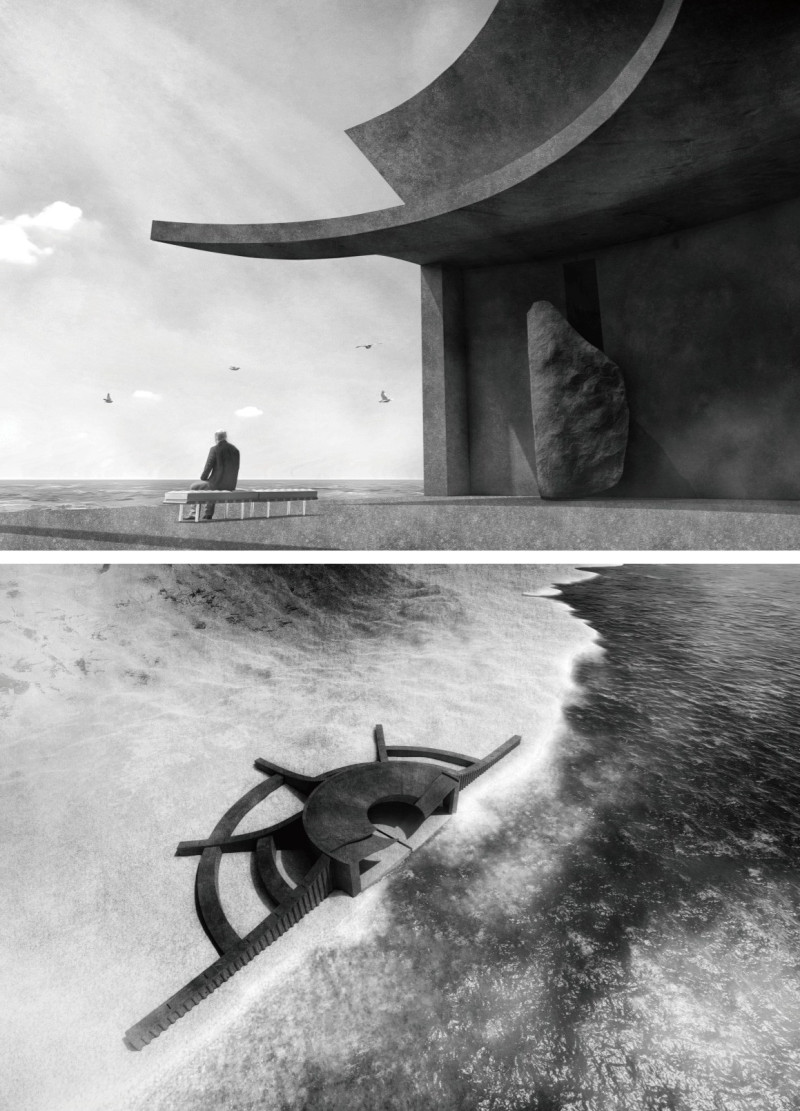5 key facts about this project
At first glance, the design showcases a circular layout that embodies ideas of unity and connectivity. This form not only offers a unique aesthetic but also serves an important functional purpose. The circular configuration allows for fluid movement within the space, promoting ease of navigation and exploration. The radial pathways leading from the center to the periphery invite users to experience different areas of the project, enhancing the overall spatial experience and encouraging engagement with the architecture.
The materials chosen for this project play a vital role in both its structural integrity and its visual language. Reinforced concrete forms the primary structure, providing strength and stability in a coastal environment that may face challenging weather conditions. This material choice speaks to a broader sustainability agenda, emphasizing durability and longevity. Additionally, the extensive use of glass in the design allows natural light to penetrate deep into the interior spaces. This not only reduces dependency on artificial lighting but also creates a seamless visual connection between indoor and outdoor environments.
Natural stone features prominently throughout the design, serving both aesthetic and functional purposes. The incorporation of stone elements creates focal points within the interiors that draw the eye and anchor the space, while also rooting the project in its geographic context. This thoughtful selection of materials contributes to a sense of place, allowing the architecture to respond to its coastal setting authentically.
The project’s design reflects a commitment to environmental considerations, with features that promote passive climate control. The strategic placement of windows and openings enhances cross-ventilation, contributing to a comfortable indoor climate without the need for excessive mechanical systems. This attention to energy efficiency aligns with contemporary architectural ideals that seek to minimize environmental impact while maximizing occupant comfort.
Unique design approaches are evident throughout the project. The interplay of solid and void through the architectural forms creates a compelling sense of depth and dimensionality. Spaces are not merely enclosed but are designed to be experienced, with varying ceiling heights and open areas that encourage interaction and exploration. The circular form, while visually distinct, also serves to guide the flow of movement organically, allowing occupants to navigate the space intuitively.
In addition to its aesthetic and functional achievements, the project embodies a philosophical exploration of the relationship between architecture and nature. By utilizing elements that mirror organic shapes and patterns, the design fosters a deeper connection between inhabitants and their environment. This approach emphasizes the notion that architecture can be both a refuge and a bridge to the natural world.
For those interested in delving deeper into the intricacies of this project, reviewing the architectural plans, sections, and various design elements reveals layers of thought and intention that contribute to its overall narrative. The architectural details illustrate how each decision intertwines with the overarching concept, further enhancing the understanding of how modern architecture can thoughtfully engage with its surroundings. Exploring these elements will provide valuable insights into the design philosophies that drove this project and highlight the innovative ideas that define contemporary architectural practice.























